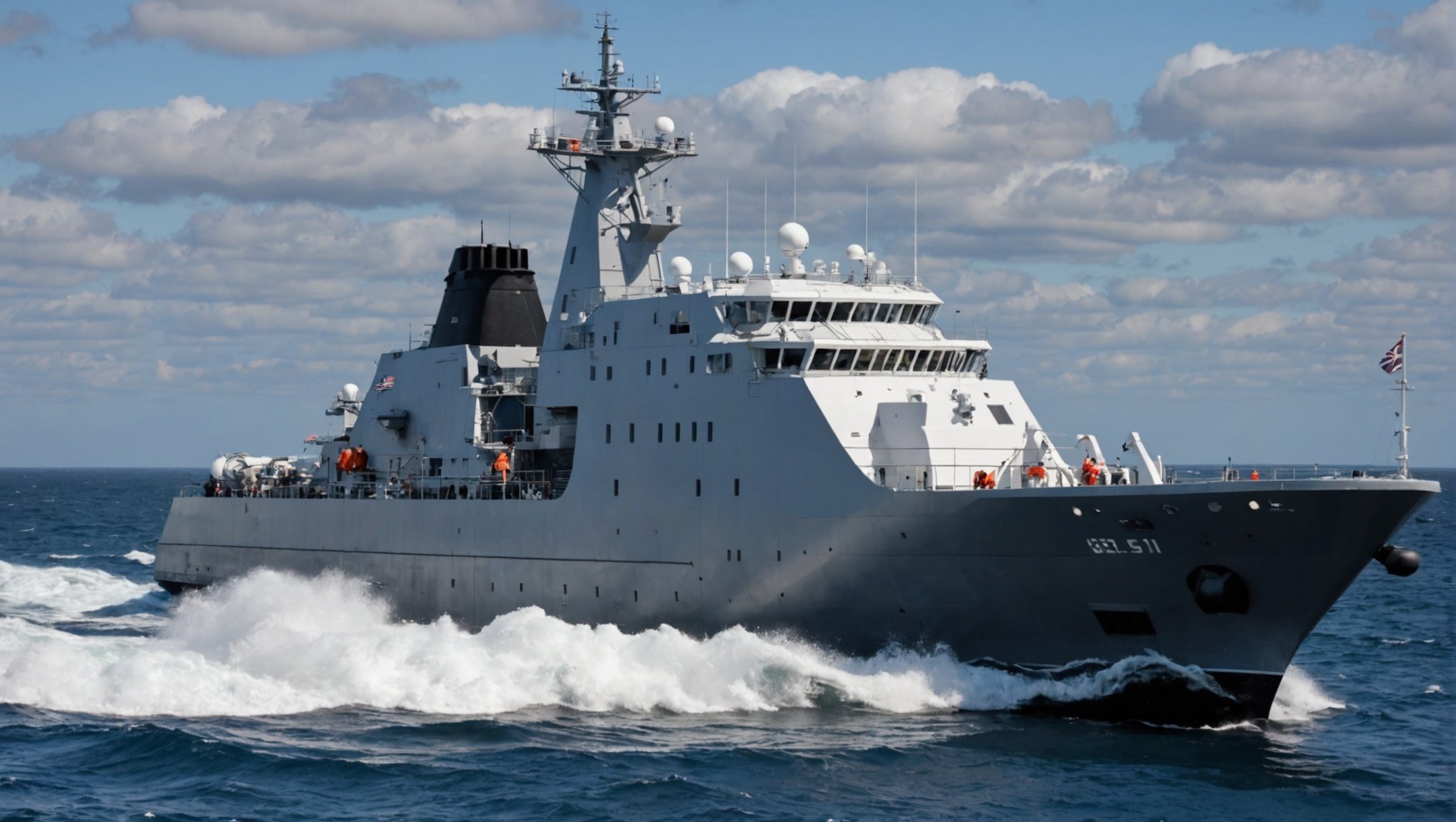Overview of Microsatellite Technology
Microsatellite technology represents a significant advancement in the field of satellite applications. Unlike traditional satellites, which often weigh tons, microsatellites are much smaller, typically weighing between 10 to 100 kilograms. This reduction in size does not compromise their functionality. Instead, it makes them a cost-effective and agile option for various applications, including maritime surveillance.
Microsatellite technology has evolved rapidly due to advancements in miniaturization and optimization. These satellites are equipped with cutting-edge technologies, allowing them to perform complex tasks such as imaging, data collection, and communication. Their reduced size and mass allow for lower launch costs, making space more accessible to a wider range of organizations.
Also to discover : Exploring the Economic Effects of Renewable Energy Subsidies on the UK”s Financial Landscape
A key feature differentiating microsatellites from traditional satellites is their ability to work as a constellation. By functioning collectively, a group of microsatellites can provide enhanced coverage and data frequency. This is particularly advantageous for maritime surveillance. In maritime domains, where real-time monitoring is critical for navigation safety and security, microsatellite constellations deliver frequent updates and detailed observations that help track vessels and monitor ocean activities efficiently.
By offering a more flexible, cost-efficient, and scalable approach, microsatellite technology continues to revolutionize how we observe and interact with our world, especially within the maritime sector.
Additional reading : Transforming Healthcare: The Impact of Wearable Technology on Patient Monitoring in the UK
Role of Microsatellites in Maritime Surveillance
Microsatellites play a crucial role in enhancing maritime security by offering precise global positioning and surveillance capabilities. These compact satellites are equipped with state-of-the-art sensors and cameras that monitor vast oceanic expanses, providing real-time data on ship movements, illicit fishing activities, and piracy threats.
Mechanisms of Microsatellite Monitoring
Microsatellites utilize sophisticated imaging techniques and radio signal detection to track vessels and identify suspicious activities. By capturing high-resolution images, they can pinpoint the exact location of a vessel, significantly enhancing global positioning accuracy. This precision is vital for coastguards and maritime authorities in maintaining security and rapid response times.
Integration with Other Technologies
The integration of microsatellites with advanced technologies such as artificial intelligence and machine learning has led to substantial surveillance advancements. These technologies process satellite data to predict irregular patterns indicative of threats, ensuring robust maritime situational awareness. By combining traditional radar systems and satellite data, security agencies can enhance their ability to monitor remote sea regions.
Exemplary Case Studies
Case studies demonstrate the effectiveness of microsatellite surveillance. For instance, a notable joint operation successfully intercepted illegal fishing trawlers in the Pacific Ocean, showcasing the power of combining microsatellite imagery with on-ground intelligence. These successes highlight the essential role microsatellites play in the modern maritime security landscape.
Applications of Microsatellite Technology in the UK
Microsatellite technology is revolutionising various fields, and its applications within UK maritime safety stand out prominently.
Current Implementations of Microsatellite Technology
The UK maritime safety sphere has actively embraced satellite data usage for more efficient surveillance and monitoring. These microsatellites provide real-time data, significantly enhancing maritime operations by allowing quicker responses to incidents at sea and aiding in maritime safety through precise tracking of vessels.
Collaborations Between Governmental and Private Sectors
Collaborative efforts between governmental bodies and private enterprises have proven instrumental in expanding the capabilities of microsatellites. These partnerships leverage resources and expertise, creating innovative solutions that boost satellite data usage for tasks such as environmental monitoring and search and rescue operations.
Relevant UK Maritime Policies Influenced by Tech Advancements
The adaptation of policies is a vital consequence of technological progression. As microsatellites become integral, UK maritime policies are evolving to accommodate and regulate their use. Legislative changes facilitate the smooth deployment of microsatellite solutions, ensuring they align with national safety and operational standards. This policy shift not only supports current implementations but also encourages further technological advancements in the UK maritime safety domain.
Benefits of Microsatellite Technology for Maritime Surveillance
In the realm of maritime surveillance, microsatellite technology has emerged as a game-changer, providing cost-effective solutions that traditional methods can’t match. Unlike larger, more complex satellite systems, microsatellites boast reduced production and launch costs, making them a financially viable option for a wider array of users. This accessibility allows companies, regardless of size, to acquire sophisticated monitoring capabilities without breaking the bank.
Implementing microsatellites leads to enhanced real-time data collection, offering timely insights into maritime activities. This is particularly crucial in environments where conditions can change rapidly, helping operators make informed decisions on the fly. With this ability, incidents like oil spills or illegal fishing activities can be detected and addressed more promptly, reducing potential environmental damage.
Additionally, microsatellites significantly boost environmental monitoring efforts. They play a critical role in ensuring maritime compliance, assisting authorities in tracking and enforcing regulations that protect marine ecosystems. By continuously providing valuable data, microsatellites enable better tracking of emissions and maritime traffic, so stakeholders can focus on maintaining the ecological health of oceans and seas.
Thus, as maritime industries strive to balance operational demands with environmental responsibilities, the adoption of microsatellite technology offers a powerful path forward.
Challenges and Limitations of Microsatellite Technology
Microsatellite technology, while groundbreaking, comes with its own set of challenges, especially in maritime contexts. One major hurdle is technical challenges related to the miniaturisation of components. These satellites often struggle with limited power resources and cooling capabilities, impacting their performance.
Data limitations are another pressing issue. Microsatellites provide narrower data coverage compared to their larger counterparts, limiting the ability to capture widespread maritime activities. Compounded by inaccuracies stemming from their smaller sensor arrays, these satellites may not deliver the high-precision images needed for critical operations.
Operational constraints further complicate matters. The shorter lifespan of microsatellites necessitates frequent replacements, driving up costs and logistics efforts. Additionally, their weaker propulsion systems can hinder their ability to adjust or maintain their orbital paths as effectively as larger satellites.
Legal and ethical concerns also arise, particularly in maritime surveillance. The global nature of oceans demands compliance with international laws regarding data collection and privacy. Any breach, intentional or otherwise, can lead to significant consequences, both diplomatically and ethically.
In summary, though microsatellites offer innovative advantages, addressing these challenges is crucial to unlocking their full potential in maritime technology.
Future Developments in Microsatellite Technology and Maritime Surveillance
Microsatellite technology continues to evolve, with several innovation trends set to redefine maritime surveillance. Emerging trends include increasingly compact satellite designs that enhance deployment and reduce costs. These compact satellites boost operational efficiency, offering a more sustainable approach to monitoring vast maritime zones.
Technological advancements in sensor technologies promise better image resolution and data transmission capabilities. High-resolution imagery will improve accuracy in identifying vessels and detecting suspicious activities, crucial for effective maritime security operations. Enhanced sensors could also allow real-time monitoring of environmental conditions, aiding in both security and environmental assessments.
Future projections suggest that as technology progresses, there’s potential for autonomous satellite constellations capable of processing data independently. This development would significantly reduce the reliance on ground-based systems, enabling quicker response times to maritime incidents.
Predictions also indicate substantial impacts on maritime security policies in the UK. Improved surveillance capabilities might lead to stricter enforcement of maritime laws and regulations. Consequently, it could necessitate updates to national security policies, ensuring that they align with technological capabilities and address evolving maritime threats efficiently. These advancements highlight a promising future where technology plays a pivotal role in safeguarding national maritime interests.






